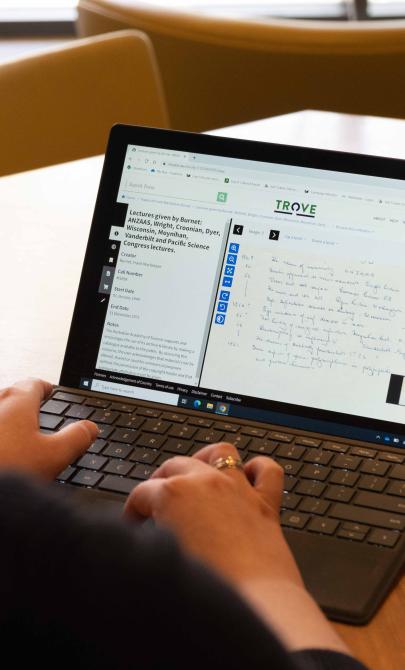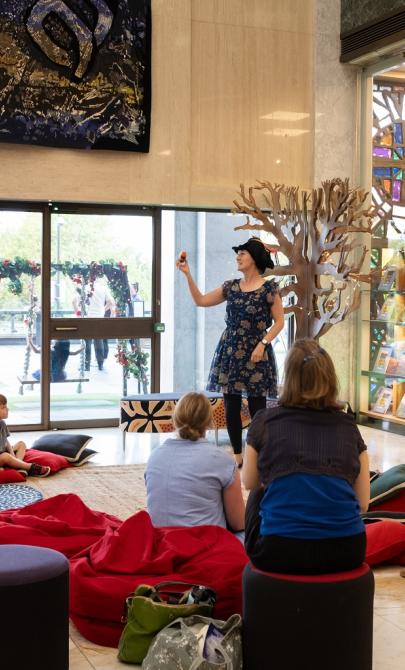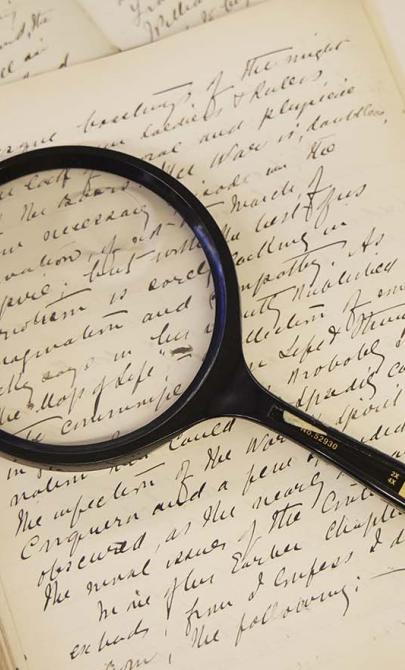Cultural perspectives in literature
About this module
This flexible resource supports inquiry-based learning by helping students interpret, analyse and evaluate cultural perspectives through a variety of activities. Featuring rich sources from the National Library of Australia’s collection, it caters to diverse classroom contexts and learning styles. It also aligns with cross-curriculum priorities, deepening students’ understanding of Aboriginal and Torres Strait Islander histories and cultures.
Copyright for teachers
You can download all collection materials in this resource for education purposes. For more information, go to copyright for teachers.
Topics in this module
This module has 3 topics:

Jacqueline Mitelman, Portrait of Judith Wright, nla.gov.au/nla.obj-136372491

Virginia Wallace-Crabbe, Portrait of Judy Horacek, cartoonist, 1997, nla.gov.au/nla.obj-136400722

George Philip & Son, Victoria, 1885, nla.gov.au/nla.obj-232528783
Curriculum links
This resource is aligned to the Australian Curriculum: English for Year 7 students.
Judith Wright - Bora Ring
- Identify and explore ideas, points of view, characters, events and/or issues in literary texts, drawn from historical, social and/or cultural contexts, by First Nations Australian, and wide-ranging Australian and world authors (AC9E7LE01)
- Identify and explain how literary devices create layers of meaning in texts including poetry (AC9E7LE06)
- Create and edit literary texts that experiment with language features and literary devices encountered in texts (AC9E7LE07)
Judy Horacek - Cartoons
- Identify and explore ideas, points of view, characters, events and/or issues in literary texts, drawn from historical, social and/or cultural contexts, by First Nations Australian, and wide-ranging Australian and world authors (AC9E7LE01)
- Explain the ways that literary devices and language features such as dialogue, and images are used to create character, and to influence emotions and opinions in different types of texts (AC9E7LE03)
Joan Lindsay - 'Picnic at Hanging Rock'
- Identify and explore ideas, points of view, characters, events and/or issues in literary texts, drawn from historical, social and/or cultural contexts, by First Nations Australian, and wide-ranging Australian and world authors (AC9E7LE01)
- Form an opinion about characters, settings and events in texts, identifying areas of agreement and difference with others’ opinions and justifying a response (AC9E7LE02)
Judith Wright- Bora Ring
- Analyse the ways in which language features shape meaning and vary according to audience and purpose (AC9E7LY03)
Judy Horacek - Cartoons
- Plan, create, edit and publish written and multimodal texts, selecting subject matter, and using text structures, language features, literary devices and visual features as appropriate to convey information, ideas and opinions in ways that may be imaginative, reflective, informative, persuasive and/or analytical (AC9E7LY06)
Joan Lindsay - Picnic at Hanging Rock
- Plan, create, edit and publish written and multimodal texts, selecting subject matter, and using text structures, language features, literary devices and visual features as appropriate to convey information, ideas and opinions in ways that may be imaginative, reflective, informative, persuasive and/or analytical (AC9E7LY06)
Judith Wright- Bora Ring
- Recognise language used to evaluate texts including visual and multimodal texts, and how evaluations of a text can be substantiated by reference to the text and other sources (AC9E7LA02)
Judy Horacek - Cartoons
- Analyse how techniques such as vectors, angle and/or social distance in visual texts can be used to create a perspective (AC9E7LA07)
Joan Lindsay - Picnic at Hanging Rock
- Understand how language expresses and creates personal and social identities (AC9E7LA01)



